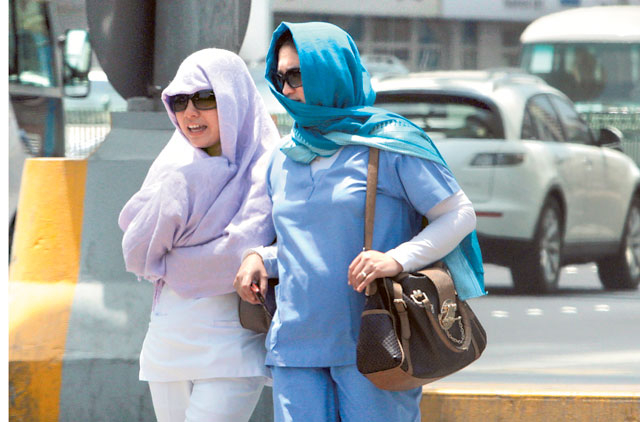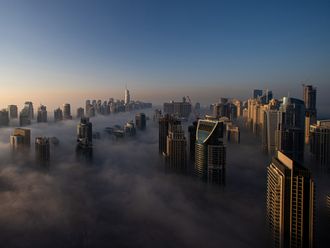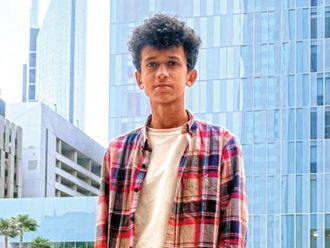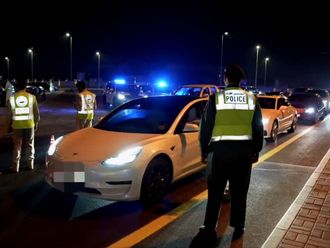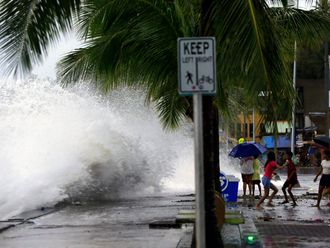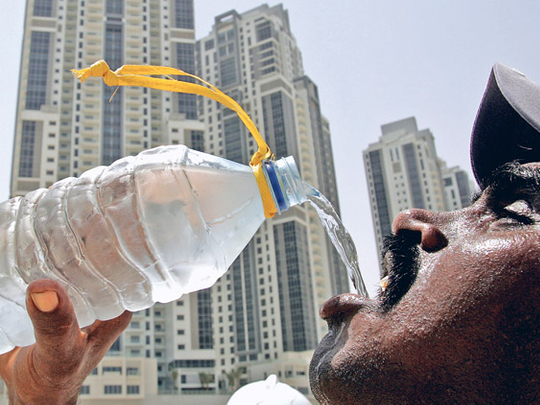
Al Ain: The weather is yet to scale the seasonal summer highs despite sizzling temperature in the emirates and much of the Arabian Peninsula.
Forecasters warn that July and August will be the year’s hottest months across the region.
The sun is expected to show no mercy on the year’s longest day on Wednesday as forecasters see temperature going up to 48 degree Celsius in some parts of the country. It will be mostly sunny on Wednesday, which will have a 13 hour, 42 minute-long day.
“It hasn’t yet reached the maximum seasonal heat,” a forecaster, who expects brutally hot conditions in the days to come, said. People in Mitribah in Kuwait have already been facing the worst, with temperature reaching 50 degree Celsius last Monday. Iraq’s Fao area also recorded a sweltering 50.5C.
He said ground level temperature could reach extreme highs in cities located in the desert.
People have been tweeting predictions of ruthless weather conditions across the region, claiming the mercury could go as high as 60 to 70C in some parts of Saudi Arabia.
No reason to panic
“It’s not true,” a forecaster said, advising people not to panic. “High temperature is not something new to the region, but it normally never goes beyond 55C. Even that is rare,” he said.
Heat cyclones normally develop in the Saudi desert and affect cities on its flow path, occasionally reaching as far as the UAE. The world’s highest temperature was recorded at 57.8C in Al Azizia in Libya on September 13, 1922.
Some of the other hottest places in the world are the Death Valley, California, with recorded high temperature of 56.7C on July 10, 1913, Oodnadatta in South Australia, and the Karakum desert of Turkmenistan. “It’s beyond imagination to have 60C or 70C anywhere in the world,” the forecaster clarified.
July and August are the hottest months of the year in the UAE when normal activities reach an ebb and educational institutions declare summer vocations. A large segment of the population, comprising mainly expatriates, also travel abroad to avoid the sizzling heat.
High humidity levels
The holy month of Ramadan also falls in between these two months. “Temperature mostly remains in the mid-40s during this time of the year, and the human body finds it very difficult to withstand the high humidity,” the forecaster said.
Relief remains minimal even in coastal cities where humidity shoots up to 90 per cent.
The UAE is usually overrun by winds coming from the hot desert in the South East, called the Empty Quarter.
Temperature usually rises at around 10am due to the hot southerly wind coming in from that direction. In the afternoon and evening, winds come in from the north-easterly direction and bring humidity in coastal areas. The hottest spots in the UAE are usually Liwa, Al Ain, and Ras Al Khaimah.
On Wednesday, temperature across coastal areas could go up to 48C in internal areas and 36C in mountainous regions.


